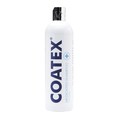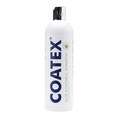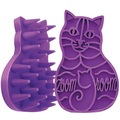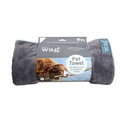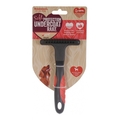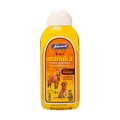As we move towards winter, you may notice your outdoor cat looking a bit more bedraggled than usual when they return from their daily adventures. As the weather deteriorates and they’re subjected to wind, rain, muddy conditions and even snow, their skin and coats are likely to need a little extra TLC.
Likewise, for indoor-only cats, changing temperatures in the home can lead to similar skin and coat problems, such as dandruff and itchiness. For this reason, it is important to observe good winter coat care practices, such as regular grooming and parasite control.
- Regular grooming removes dead skin cells, as well as dirt and detritus that your cat might have picked up outside. It also improves circulation, stimulates the production of the hair’s natural oils, and allows you to detect fleas and ticks in the coat. Longhaired cats are likely to need grooming more frequently to remove knots and matts, but shorthaired cats shouldn’t be forgotten.
- Avoid bathing your cat unless they absolutely need it. Cats hate baths as it is, but they can exacerbate existing dryness by stripping the skin and fur of its natural oils. If your cat is muddy, wait for it to dry before brushing it off.
- Get the temperature right as an environment that is too warm can cause uncomfortable symptoms for your cat. October is usually about the time when the heating goes on, which can spell problems for our felines – especially those that stay indoors. If your cat is used to venturing outside, avoid confining them when it gets a bit chillier, as this may cause unnecessary stress and discomfort.
- Keep your cat hydrated. Cats are notoriously bad drinkers and in summer we may worry they are not drinking enough. In winter, they use more energy keeping warm, so hydration is just as important. If your cat doesn’t drink much then it might be worth adding a bit of water to their daily food. Dehydrated cats can experience dandruff, so keep your eyes peeled for this.
- Skin supplements and fish oils can really help improve the appearance and condition of the skin and coat. For nourished, glossy coats, consider your cat’s diet and how it might be improved as the seasons change – particularly when it comes to older kitties.
If you have found this article helpful, you might be interested to read our other related articles: Do cats need bathing?, Common skin complaints in cats, Hairballs: what are they and how do I prevent them?, How does nutrition affect a cat's skin and coat?
If you have any other points to add, feel free to comment below or email me directly: [email protected].
Written by: Hannah



